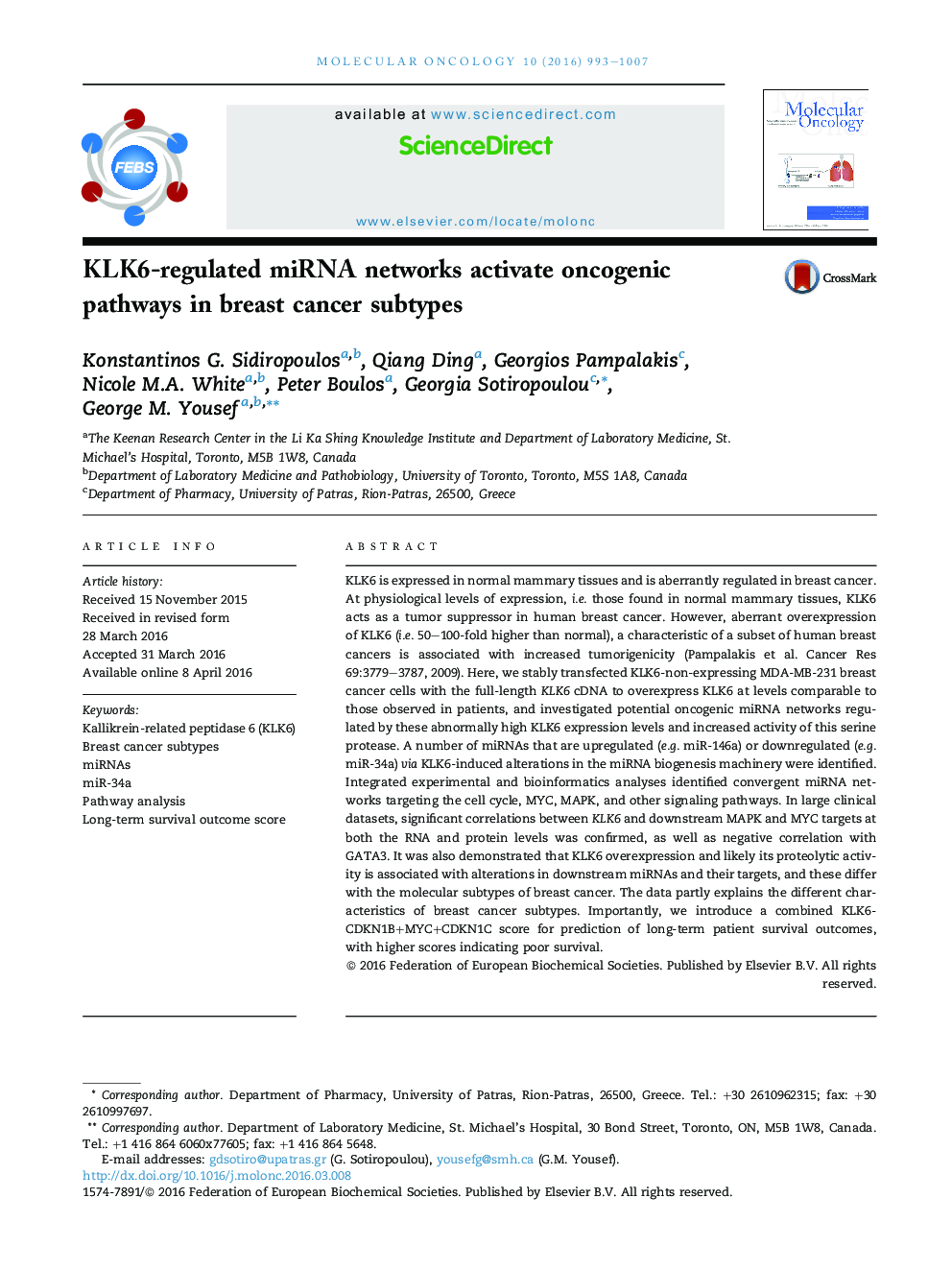| Article ID | Journal | Published Year | Pages | File Type |
|---|---|---|---|---|
| 5528599 | Molecular Oncology | 2016 | 15 Pages |
â¢Tumor associated aberrant overexpression of KLK6 alters certain miRNA-regulated networks.â¢High overexpression of KLK6 suppresses miR-34a, while it induces MAPK and MYC cell signaling pathways by regulating multiple miRNAs.â¢A KLK6-based combined score is introduced that can predict long-term patient survival outcome.
KLK6 is expressed in normal mammary tissues and is aberrantly regulated in breast cancer. At physiological levels of expression, i.e. those found in normal mammary tissues, KLK6 acts as a tumor suppressor in human breast cancer. However, aberrant overexpression of KLK6 (i.e. 50-100-fold higher than normal), a characteristic of a subset of human breast cancers is associated with increased tumorigenicity (Pampalakis et al. Cancer Res 69:3779-3787, 2009). Here, we stably transfected KLK6-non-expressing MDA-MB-231 breast cancer cells with the full-length KLK6 cDNA to overexpress KLK6 at levels comparable to those observed in patients, and investigated potential oncogenic miRNA networks regulated by these abnormally high KLK6 expression levels and increased activity of this serine protease. A number of miRNAs that are upregulated (e.g. miR-146a) or downregulated (e.g. miR-34a) via KLK6-induced alterations in the miRNA biogenesis machinery were identified. Integrated experimental and bioinformatics analyses identified convergent miRNA networks targeting the cell cycle, MYC, MAPK, and other signaling pathways. In large clinical datasets, significant correlations between KLK6 and downstream MAPK and MYC targets at both the RNA and protein levels was confirmed, as well as negative correlation with GATA3. It was also demonstrated that KLK6 overexpression and likely its proteolytic activity is associated with alterations in downstream miRNAs and their targets, and these differ with the molecular subtypes of breast cancer. The data partly explains the different characteristics of breast cancer subtypes. Importantly, we introduce a combined KLK6-CDKN1B+MYC+CDKN1C score for prediction of long-term patient survival outcomes, with higher scores indicating poor survival.
